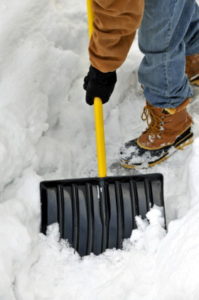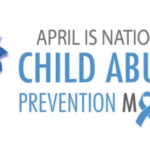A winter wonderland can turn deadly with heart attacks brought on by snow shoveling

BUFFALO, Jan. 6, 2021 — As pretty as new-fallen snow appears, shoveling sidewalks and driveways can be deadly. According to the American Heart Association, the world’s leading nonprofit organization focused on heart and brain health for all, many people may face an increased risk of a heart attack or sudden cardiac arrest after shoveling heavy snow.
The heart-health hazards of snow shoveling were specifically called out in the Association’s 2020 updated scientific statement, Exercise-Related Acute Cardiovascular Events and Potential Deleterious Adaptations Following Long-Term Exercise Training: Placing the Risks Into Perspective–An Update, and numerous scientific research studies over the years have identified the dangers of shoveling snow for people with and without previously known heart disease.
Barry Franklin, Ph.D., FAHA, lead author of the writing group for the Association’s scientific statement, is one of the leading experts on the science behind the cardiovascular risks of snow shoveling. He said reports estimate that hundreds of people die during or just after snow removal in the U.S. each year.
“Shoveling snow is a very strenuous activity, made even more so by the impact that cold temperatures have on your body, increasing the blood pressure while simultaneously constricting the coronary arteries. It really is a ‘perfect storm’ for acute cardiac events,” said Franklin, a professor of internal medicine at Oakland University William Beaumont School of Medicine in Royal Oak, Mich. “Among the many findings of our research, we saw that the cardiac demands of heavy snow shoveling, including marked increases in the heart rate and systolic blood pressure, could equal and exceed the upper levels achieved during maximal treadmill testing in sedentary men. In one study, we found that after only two minutes of snow shoveling, study participants’ heart rates exceeded the upper limit – 85% of maximal heart rate – commonly prescribed for aerobic exercise testing. The least fit subjects demonstrated the highest heart rates during shoveling.”
Franklin said it’s not only snow shoveling that can be dangerous; research shows an increased risk for heart attacks even in people using automatic snow blowers. The extra exertion of pushing a snow blower can raise heart rate and blood pressure quickly.
“The impact of snow removal is especially concerning for people who already have cardiovascular risks like a sedentary lifestyle or obesity, being a current or former smoker, having diabetes, high cholesterol or high blood pressure, as well as people who have had a heart attack or stroke,” he said. “People with these characteristics and those who have had bypass surgery or coronary angioplasty simply should not be shoveling snow.”
Franklin said the most important thing is to be aware of the dangers, be prepared and take it easy, including taking short breaks. For apparently healthy people who do engage in snow removal, recognize that snow blowers can reduce the demands on the heart and that pushing the snow with a shovel is preferred over lifting and throwing it.
Also, know the common signs of heart trouble and if you experience chest pain or pressure, lightheadedness or heart palpitations or irregular heart rhythms stop the activity immediately. Call 9-1-1 if symptoms don’t subside shortly after snow removal.
Learn more about cold weather and cardiovascular disease here.
Additional Resources:
- How to Stay Active in Cold Weather
- Association between quantity and duration of snowfall and risk of myocardial infarction – Canadian Medical Association Journal
- Snow shovel-related injuries and medical emergencies treated in US EDs, 1990 to 2006 – American Journal of Emergency Medicine
- Cardiac Demands of Heavy Snow Shoveling – Journal of the American Medical Association
- Snow shoveling: A trigger for acute myocardial infarction and sudden coronary death – American Journal of Cardiology
- Acute myocardial infarction after manual or automated snow removal – American Journal of Cardiology
- Sudden cardiac death after manual or automated snow removal – American Journal of Cardiology
- Follow us on Twitter @HeartNews












